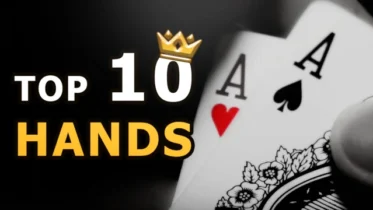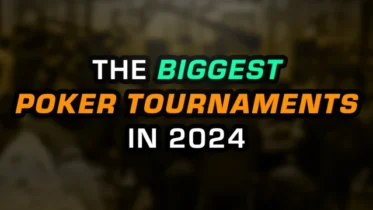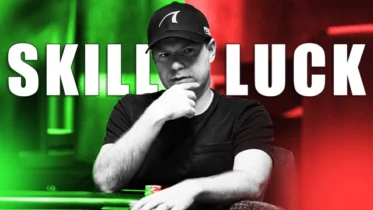I want to discuss three relating poker terms that often get mixed up and misused by players. We will be discussing the relationship between equity, expected value, and equity realization.
Equity is the most common term that most serious to even recreational players have heard before. Equity is simply the percentage share of the pot based on the odds of one hand versus another or a range versus another range. The simplest example of equity is an all-in preflop situation. Let’s look at the equities when A-K suited is all-in preflop against J-J. We can use any equity calculator to do this, I use Power Equiliab, below are the results.
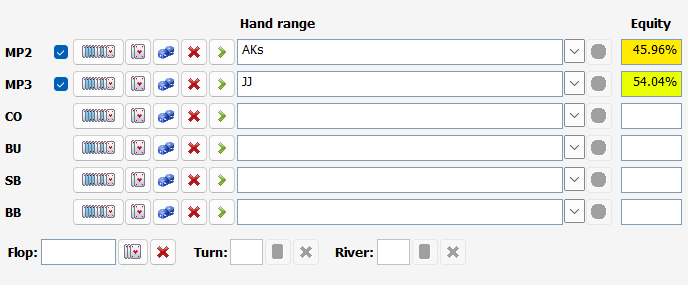
As you can see, J-J has 54% equity and A-K suited has 46% equity. The two equities (or more if multiway) will always add up to 100%. What these two numbers mean is that over a very large sample size, J-J is going to win 54% of the time and A-K suited will win 46% of the time. To remove any variance, the two players could simply divide the pot into a 54/46 split and nothing would change. They might call this collecting or cashing in their equity. Equity is fairly simple and is just the odds in poker.
Poker Equity – Understanding Expected Value
EV (or expected value) can get more complicated. In the above example, if the pot were $100, the EV of A-K suited is $46 and the EV of J-J is $54. This is fairly simple since it is an all-in situation and no more betting can occur. However, in poker, most situations are not just all-in or fold. There is betting and folding that occurs and that affects the EV of a situation.
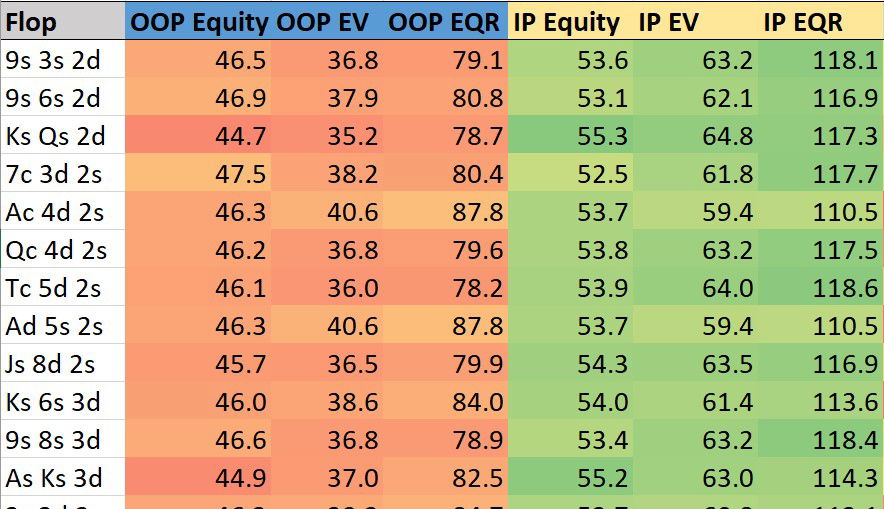
The above chart is from an aggregate report in PIO Solver analyzing the Equities, EV and equity realization on various flops in a situation where the button opens and the big blind (BB) calls. As you can see, on the 9♠-3♠-2♦ flop the BB range has 46.5% equity. If there was no more betting that occurred and both players were forced to check to the river, the BB would expect to return 46.5% of the pot, which is $100 in this example.
The EV of the BB player is only 36.8%. What does this number mean? Using a GTO strategy for both players, PIO Solver has determined that the BB will only return 36.8% of the pot or $36.80 on the 9♠-3♠-2♦ board. This is because the in-position (IP) player gets to make better decisions throughout the hand and also has a stronger range. The combination of the IP player’s stronger range and ability to acquire more information than the BB allows the IP player to collect more EV than his equity shows.
In this instance, the EV of both the out-of-position OOP (36.8) and IP (63.2) players add up to 100 just like the equities. The IP’s strong strategy and nothing the BB player can do about it because he is out of position, the IP player is essentially “stealing” equity from the OOP player. Stronger or weaker strategies will lead to EV’s that are more or less than the equity of a given range or hand.
Poker Equity – Equity Realization
Now lets look at the 3rd Colum EQR (or equity realization). EQR is simply a percentage relationship of equity and EV. On the 9♠-3♠-2♦ board, the BB only realized 79.1% of his preflop equity where the IP player realized 118.1%. Equity realization is extremely important when considering preflop calls with action remaining. Some hands realize equity better because they hit more flops and can easily continue. These hands often consist of connected and or suited cards. They can flop various draws that allow them more post flop playability.
A hand such has K-5 offsuit has a hard time realizing its equity. It often misses the flop and has to fold without seeing all five cards and struggles to make a hand strong enough that can withstand lots of aggression. Learning the types of hands that realize equity better will help you improve your poker game.
In summary, equity, expected value and equity realization are related to each other, but describe different data points in a hand. It is important to understand and use all 3 terms correctly to study and analyze your poker game.
Best of luck at the tables
Matt

